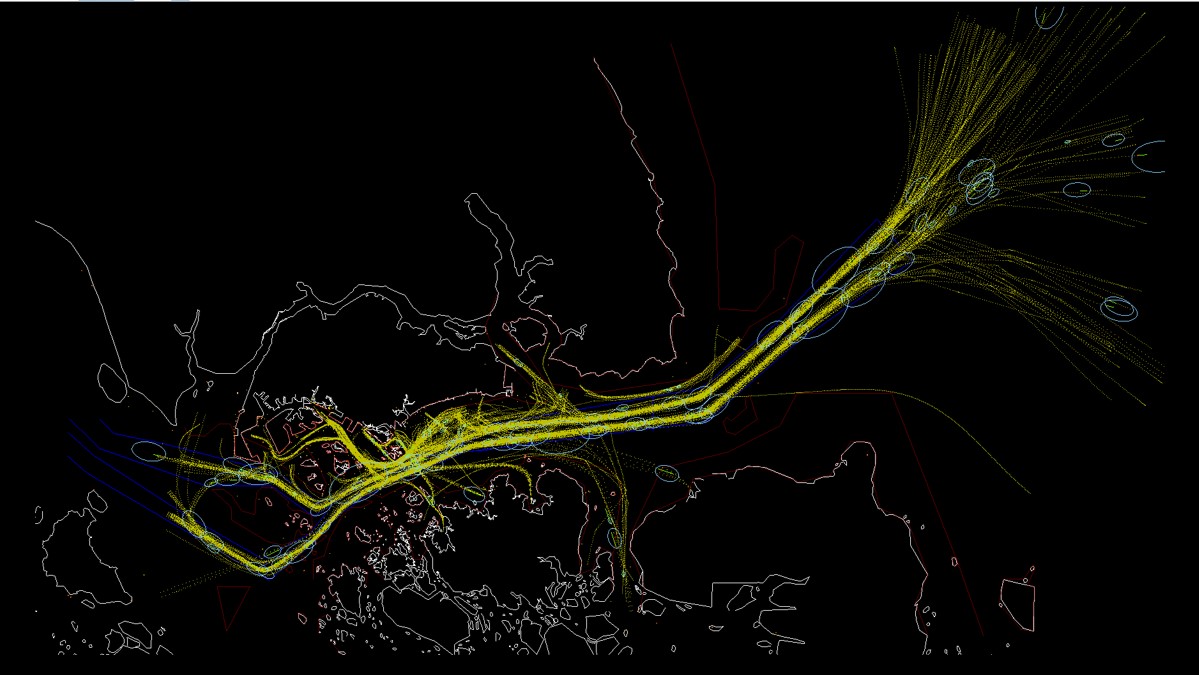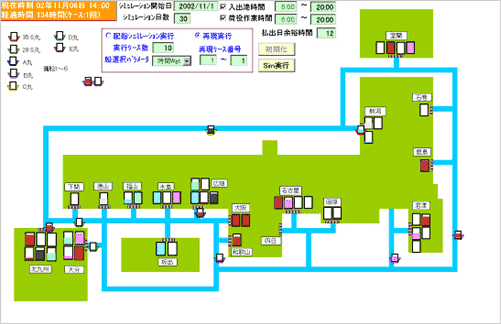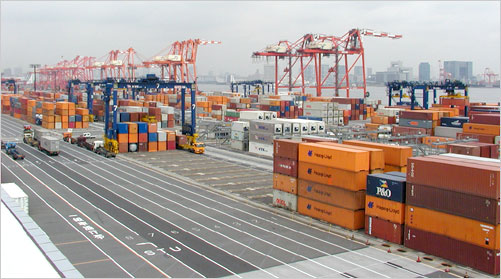Analysis and Simulation
Simulations are used for the events that cannot be verified at present such as designing port developments, and the events that are difficult to conduct and verify on a real ship such as ship maneuvering and mooring under strong winds and strong tides.
JMS offers appropriate safety assessments and simulation methods for problem solving to meet customer's requests.
- When formulating the Port Plans, it is essential to make better plans in terms of both port safety and efficiency, such as safe navigation of ships in the water area after the plan, safe berthing and cargo handling at the quay, and efficient port operation. However, it is not possible to know the flow of marine traffic or to confirm the safety of mooring or maneuvering by using an actual ship when the facilities are not developed at the planning stage. Also, it is not possible to know about the changes in physical distribution due to the development of port facilities. Therefore, it is necessary to reproduce the events of the future environment by the simulation method.
Since its founding, JMS has developed a variety of simulation tools, including a maneuvering simulator that simulates the motion and landscape of a ship and evaluates the safety of maneuvering, a marine traffic flow simulation that simulates the navigational environment and evaluates the safety of marine traffic, and a mooring motion simulation that simulates the motion of a ship while it is mooring and evaluates the safety of mooring lines and fenders and cargo handling safety. We support our customer by using these to solve problems.
Marine traffic flow simulation
This tool simulates the traffic flow of ships. Its simulation model is created from the real traffic conditions (marine traffic survey, AIS data analysis, etc.). It is also possible to predict the flow of traffic in the event of deregulation of the traffic rules such as changes in traffic volume, changes in navigation routes, and overtaking restrictions. Furthermore, by conducting risk assessments of simulated traffic environments through simulations, it is possible to predict the impact of environmental changes on marine traffic.
The tool has been used in a variety of projects, including the verification of the rectification effect of installing a virtual buoy at the mouth of Tokyo Bay, and the safety improvement effect of setting speed limits and passing limits in the Singapore Strait.

Mooring motion simulation
This is a tool for evaluating the safety of mooring by reproducing the motions (Roll, Pitch, Heave, Sway, Surge, Yaw) of ships moored at quays, piers, buoys, etc. when they are subjected to external forces such as waves, winds, tidal currents, and long-period undulations, and analyzing the tension acting on mooring lines and the compression ratio of fenders. It is also possible to simulate not only shore facilities such as quays but also floating structures moored by the Ship to Ship method.
This system has been used in a variety of projects, including verification of mooring safety in response to the increase in the size of LNG carriers at special jetties for dangerous goods, evaluation of mooring limits in the event of a tsunami caused by a huge earthquake, evaluation of mooring safety of large tankers moored in buoys, and evaluation of mooring enhancement in response to the improvement work of mooring poles and fenders.
Logistics Simulation (Queue simulation)
It is a queueing simulation tool for evaluating the relationship between service and capacity and efficiency, such as examination of cargo handling operation rate, examination of cargo handling equipment capacity, examination of optimum ship allocation plan, and examination of route utilization efficiency according to control plan. This system is used to optimize the quality and quantity of services to be provided in terms of efficiency. For example, the system simulates the stockpiling amount of coal and oil at land-based bases, taking into account the capacity of cargo handling equipment, factors of delay and seasonal factors, etc., to determine the optimal ship allocation plan and the number of ships needed to maintain a certain stockpiling amount.
Ship Allocation Simulation
This simulation calculates in detail the relationship between the amount of coal and oil stored at the land base and ship allocation. Simulation can be performed in advance, taking into account cargo handling rate, seasonal factors and ship delay factors. It is effective in determining the number of ships to operate efficiently, the number of cargo handling equipment, and how to allocate ships.


Containers Terminal Simulation
A simulation for examining the layout of a container terminal. Since differences in cargo handling efficiency and truck waiting time due to differences in layout, it is possible to examine more efficient operation methods for the same birth area and truck.
Business Inquiries
Research & Consulting Group
+81 44-548-9131





